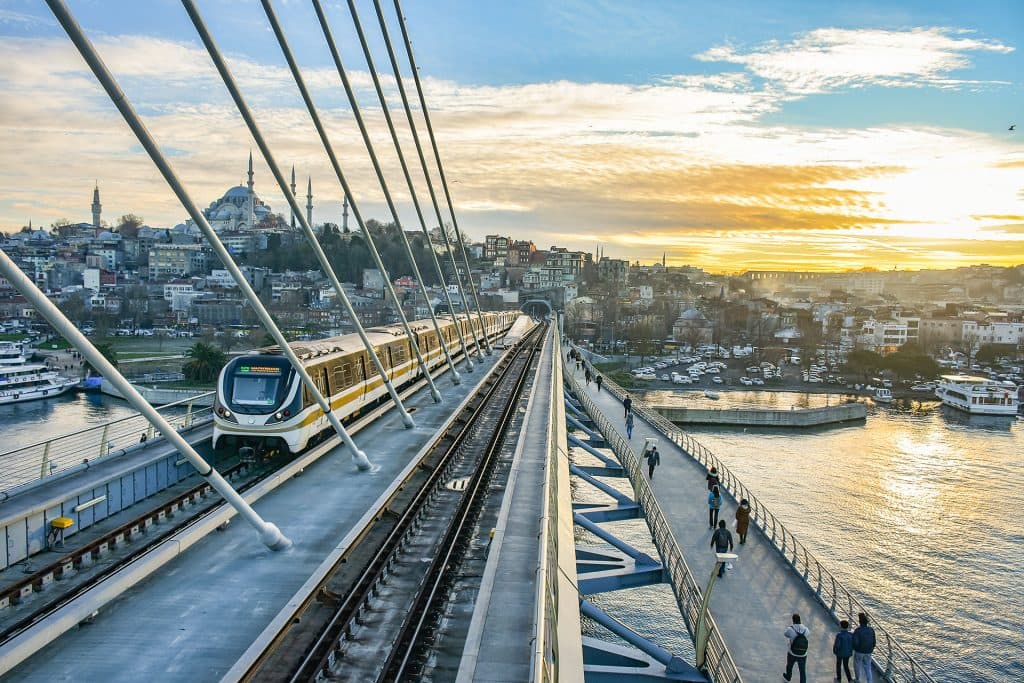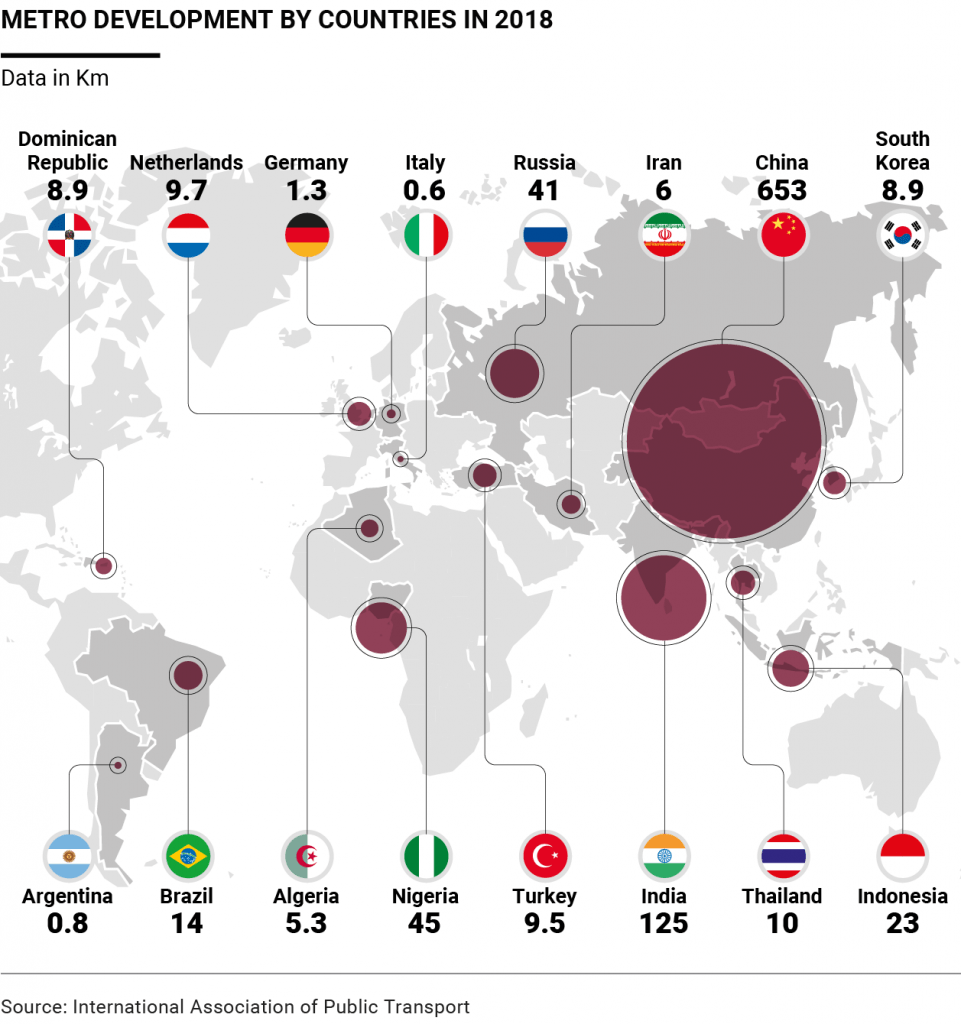
The International Association of Public Transport (UITP) Secretary General Mohamed Mezghani has warned leaders of the 20 major world economies and some of the most important international investment funds that urgent action is needed to fight climate change. Mezghani launched an appeal for more investments in sustainable mobility, which he identified as the best tool to combat urban pollution, reduce journey times, and eliminate congestion on the roads.
In an interview with the International Railway Journal, Mezghani explained that the demand for urban mobility is constantly growing, but the average time it takes to build new subway lines is still too long.
A look at the world’s subway lines
The International Association of Public Transport released figures a few weeks ago that provided a detailed picture of the development of rail transport in the world. In 2108, 121 urban rail transport projects were completed, for a total of 1,270 kilometers. A slightly lower figure than the 1,348 kilometers inaugurated in 2017. This 6% reduction is the reversal of a trend from the previous four years, during which the average annual growth was 36%.
Compared to the total transport by rail, the underground lines inaugurated in 2018 numbered 75 in 17 countries and 39 cities, for a total length of 960 kilometers. Of these, 62% are completely new lines, and the remaining 38% are extensions of existing lines.
With the inauguration of the metro in the city of Urumqi, China, the total number of cities served by subways in China reached 181.
China and Paris are out in front
The race for sustainable mobility now involves many countries, even though none of them can keep up with China. In the last ten years, 100 new subway lines have been inaugurated in China, an absolute record, many of them in cities with a population of over 10 million inhabitants. But — the International Association of Public Transport points out — although China holds the record for highest number, major projects are under construction elsewhere. In particular, UITP General Secretary Mezghani points to two: The Grand Paris Express and the Riyadh metro. Both projects, which involve Salini Impregilo among the builders, will stand out from the rest for their impact on the future of the two cities.

TBMs at work on the Grand Paris Express
The Grand Paris Express will have 200 kilometers of new tracks connecting almost all the municipalities in the Île-de-France with its 68 stations. Construction work, according to the Société du Grand Paris (the company that manages the works), will employ 15,000 people every year. Once finished, 90% of the Parisian population will live no farther than two kilometers from a metro station. The project is budgeted at €35 billion and will take 15 years to finish, but the economic impact will also be significant if it is true that – as the Île-de-France Chamber of Commerce has calculated – it should result in Greater Paris producing an additional GDP of €140 billion by 2030.
In achieving this goal Salini Impregilo is already doing its part and Tunnel Boring Machine Koumba, which will carry out the excavations to extend line 14 south of the French capital (one of the four sections of the work), is ready for the first trip.
Riyadh, the subway running below the Saudi capital
Equally complex but different in structure is the Riyadh subway construction project. In this case, six different lines are being built that intersect each other and that together cover a distance of 176 kilometers. The construction of the project, for which an investment of over $20 billion is expected, will employ a total of over 50,000 people, with a significant improvement on the quality of life in the Saudi city. Salini Impregilo is a part of the consortium building Line 3 (Orange Line), the longest of the six planned that will reach 41.2 kilometers divided into 22 stations.
A call for support to build more subways
The International Association of Public Transport’s appeal focuses on the sustainability of urban transport by rail, which reduces pollution levels compared to road transport. The numbers it collected from various corporate sustainability reports compiled by the companies that manage some of the most important subway networks in the world show that, for example, the New York subway cuts CO2 emissions by 15 million tons each year. For Los Angeles, the figure is 12.9 million, and 2.4 million for the subway managed by RENFE in Spain.
That’s why the Association is calling on governments to increase investments in public transport, also making use of innovative financing.
«The Hong Kong model involving property development over stations and depots is another example», said UITP’s Mezghani in the interview. «Riyadh has already earned €250 million by selling naming rights for stations even before the first train has run. Dubai is also offering naming rights for stations. New York will introduce congestion charging soon, following Singapore, London and Stockholm».
The sponsorship solutions can be helpful to governments in sharing the cost of ensuring sustainable development and livable conditions in the big cities in the future.

